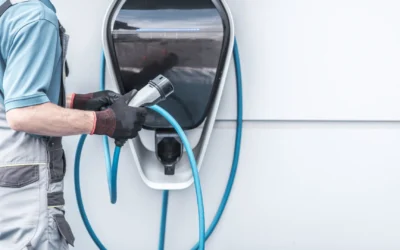• The economy of India is growing consistently at a significant pace at the back of industrial and digital revolution.
• The market share of SAS in India is estimated to reach USD 417 million by 2025.
• Key players in the local market include Siemens, ABB, and GE, which offers a wide range of substation automation products and solutions.
The economy of India is growing consistently at a significant pace at the back of industrial and digital revolution. The growth in the economy, population and radical improvements in the electrification rates of India has in turn significantly increased the demand for electricity in the country which has placed additional strain on the overall power system. In recent years as per the economic survey of India, the transmission and distribution losses were found to be in excess of 20% of the generation, which is twice the global average of T&D losses. Furthermore, it is observed that the archaic electricity grid infrastructure requires significant improvements in order to increase overall efficiency and reliability. Otherwise, it will not be able to sustain the growth instead cause tremendous financial and production losses as it has happened in the past.
Additionally, the country is pushing to reduce carbon emissions from the energy sector which has led India to move away from conventional generation to renewable energy generation which itself requires grid upgradation including substation automation. It is significant to note that generation capacity from renewables including solar and wind has consistently increased over the last few years (see figure 1).

Figure 1: Renewable Energy Generation in India (2019-2022).
Source: PTR Inc
Substation Automation Architecture Market in India
In India, the substation automation market accounted for around USD 327 million in 2020. It is expected that the market of substation automation systems will grow with a CAGR of 5% from 2020-2025. The substation automation market of India is estimated to reach USD 417 million by 2025. Key players in the local market include Siemens, ABB, and GE, which offers a wide range of substation automation products and solutions. It is noteworthy that Siemens has the highest share in the local market, which is followed by ABB and GE.
According to PTR, in India both types of substation automation systems namely centralized SAS and decentralized SAS are installed. However, there is segregation between them at the voltage levels as distributed SAS are installed mostly at high voltage levels whereas centralized SAS are preferred for medium voltage level installations. The three key applications for distributed substation automation systems include transmission, distribution and oil and gas sector. As per the estimates of PTR, these applications in future will move towards centralized substation automation systems from distributed substation automation systems.
In 2020, distributed substation automation systems accounted for 60% while centralized SAS accounted for only 40% of the total SAS. PTR predicts that in 2025, the share of distributed automation systems will decrease to 55% while share of centralized automation systems will increase to 45%.
In terms of controllers, substation automation market in India is segmented into PLC (programmable logic controllers), RTUs (remote terminal units) and BCU (bay control unit) and others. As per the estimates of PTR, the market share of PLC and RTUs will significantly decrease whereas the market share of BCU is expected to increase in the future. In 2025, the market share of BCU and others will account for 85% of the total market share whereas the market share of RTUs and PLC will account for only 10% and 5% respectively.

Figure 2: Ranking of key substation automation solution providers in India.
Source: PTR Inc

Figure 3: Share of different substation automation architectures in the India in 2020.
Source: PTR Inc

Figure 4: Share of different substation automation architectures in the India in 2025.
Source: PTR Inc

Figure 5: Controller segmentation of SAS market in India in 2025.
Source: PTR Inc
Drivers and inhibitors in the SAS market of India
PTR believes that India is a cost sensitive market, so the deployment of substation automation systems is greatly influenced by cost. In the coming years it is expected that renewable energy will drive the market for substation automation systems. Other than renewable energy, microgrid and EV charging infrastructure are key growth drivers in India’s substation automation market.
Looking Ahead
As per the estimates of PTR, substation automation market of India will grow with a CAGR of 5% from 2020-2025 and is expected to reach a market size of USD 417 million in 2025. In the next few years, the market share of distributed substation automation systems will decrease to 55% whereas the market share of centralized substation automation systems will increase to 45%. Furthermore, it is expected that the market share of programmable logic controllers and remote terminal units will radically reduce whereas bay control units will gain traction in the coming years. The factors driving the substation automation market in the future will include renewable energy which is followed by microgrid and EV charging infrastructure in India.
Substation Automation Service Overview
The research presented in this article is from PTR's EV Charging Infrastructure service. For information about this service please submit a request shown below.
Contact Sales:
Europe
+49-89-12250950
Americas
+1 408-604-0522
Japan
+81-80-7808-1378
GCC/Rest of APAC
+971-58-1602441
More about our:
Substation Automation Market Research
Recent Insights
PTR Enters Media Partnership with PCIM Asia Shanghai 2025
PTR Enters Media Partnership with PCIM Asia Shanghai 2025 SUNNYVALE, USA, June 12, 2025 – Power Technology Research (PTR), a global authority in...
PTR Partners as Official Media Partner for Net Zero Europe – Solar & Energy Storage Summit 2025
PTR Partners as Official Media Partner for Net Zero Europe – Solar & Energy Storage Summit 2025 SUNNYVALE, USA, June 10, 2025 – Power Technology...
Key Strategies for EV and EVCI Expansion
The authors, Mike Sheppard, CEO of PTR Inc. & Zainab Shah, Lead EVCI Analyst - Americas, highlight how the U.S. EV and charging infrastructure...
